-
 Bitcoin
Bitcoin $118400
0.39% -
 Ethereum
Ethereum $3814
2.17% -
 XRP
XRP $3.547
1.34% -
 Tether USDt
Tether USDt $1.000
0.00% -
 BNB
BNB $769.5
2.95% -
 Solana
Solana $191.7
6.36% -
 USDC
USDC $0.9999
0.01% -
 Dogecoin
Dogecoin $0.2722
7.75% -
 Cardano
Cardano $0.8995
5.59% -
 TRON
TRON $0.3158
-0.78% -
 Hyperliquid
Hyperliquid $47.37
4.46% -
 Stellar
Stellar $0.4848
3.54% -
 Sui
Sui $4.031
1.72% -
 Chainlink
Chainlink $20.11
3.94% -
 Hedera
Hedera $0.2832
3.16% -
 Avalanche
Avalanche $26.20
4.27% -
 Bitcoin Cash
Bitcoin Cash $530.5
0.67% -
 Shiba Inu
Shiba Inu $0.00001568
3.59% -
 Litecoin
Litecoin $118.4
1.42% -
 UNUS SED LEO
UNUS SED LEO $8.976
-0.23% -
 Toncoin
Toncoin $3.349
2.54% -
 Polkadot
Polkadot $4.590
2.54% -
 Uniswap
Uniswap $10.56
-0.59% -
 Ethena USDe
Ethena USDe $1.001
0.00% -
 Monero
Monero $327.7
0.39% -
 Pepe
Pepe $0.00001422
2.62% -
 Bitget Token
Bitget Token $4.973
-1.22% -
 Dai
Dai $1.000
0.02% -
 Aave
Aave $331.9
1.59% -
 Bittensor
Bittensor $429.6
-0.56%
Step-by-step guide to liquid staking on Solana
Liquid staking on Solana lets users stake SOL, earn rewards, and retain liquidity via stSOL tokens, which can be used in DeFi for added yield.
Jul 20, 2025 at 06:42 am
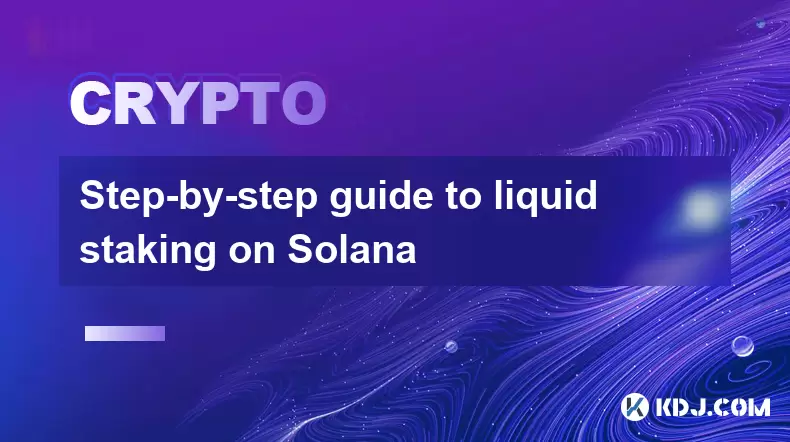
What is Liquid Staking on Solana?
Liquid staking is a mechanism that allows users to stake their cryptocurrency while retaining liquidity through the issuance of a tokenized representation of their staked assets. On Solana, this process enables users to earn staking rewards without locking up their SOL tokens, as they receive a derivative token—often referred to as stSOL or similar—representing their stake. This derivative token can be used in decentralized finance (DeFi) applications, providing flexibility and additional yield opportunities.
In traditional staking, users lock up their tokens for an indefinite period to support the network's security and consensus. However, this approach reduces capital efficiency. Liquid staking solves this issue by allowing users to maintain exposure to their staked assets while enabling them to participate in other financial activities.
Choosing a Liquid Staking Provider on Solana
To begin the liquid staking process, users must first choose a trusted liquid staking provider on the Solana network. Popular platforms include Lido Finance, Marinade Finance, and Jito Network, among others. These platforms act as intermediaries, pooling staked SOL from multiple users and distributing staking rewards proportionally.
Before selecting a provider, consider the following:
- Reputation and security audits of the platform
- Fee structure for staking and unstaking
- Supported wallets, such as Phantom or Solflare
- Availability of stSOL derivatives and their integration with DeFi protocols
Once a provider has been chosen, ensure your wallet is compatible and connected to the platform's interface.
Connecting Your Wallet to the Liquid Staking Platform
The next step involves connecting your Solana-compatible wallet to the chosen liquid staking provider. Here’s how to do it using Phantom Wallet as an example:
- Open the liquid staking platform in your browser
- Click the "Connect Wallet" button
- Select Phantom from the available options
- Approve the connection in the Phantom extension pop-up
Once connected, your wallet address and SOL balance will be visible on the platform. Ensure that you have sufficient SOL to stake and leave a small amount for transaction fees, usually around 0.01 SOL.
Staking SOL and Receiving stSOL Tokens
After connecting your wallet, proceed to the staking interface of the platform. Here’s a breakdown of the steps:
- Enter the amount of SOL you wish to stake
- Review the transaction details, including any fees
- Confirm the transaction in your wallet
- Wait for the transaction to be finalized on the Solana blockchain
Once the transaction is confirmed, you will receive an equivalent amount of stSOL tokens in your wallet. These tokens represent your staked SOL and accrue staking rewards over time. You can track your staking rewards and the value of your stSOL in real time through the platform.
It's important to note that stSOL may have a different exchange rate than SOL over time due to accumulated rewards. Always verify the current exchange rate before using stSOL in DeFi protocols.
Using stSOL in DeFi Protocols
One of the main advantages of liquid staking is the ability to use stSOL tokens in various DeFi applications. These tokens can be deposited into liquidity pools, used as collateral for loans, or supplied to yield-generating protocols.
Here’s how to use stSOL in a DeFi application:
- Navigate to a supported DeFi platform, such as Raydium or Orca
- Connect your wallet as before
- Locate the stSOL token in the available assets
- Deposit or supply stSOL to the relevant pool or market
- Confirm the transaction and monitor your yield
Ensure that the DeFi platform accepts the specific stSOL token issued by your liquid staking provider. Not all platforms support every derivative token, so double-check compatibility before proceeding.
Unstaking and Withdrawing Your SOL
When you decide to unstake your SOL, the process may vary depending on the provider and whether the unstaking is instant or requires an unbonding period. Some platforms allow instant unstaking via a liquidity pool, while others require a waiting period before your SOL becomes liquid again.
To unstake:
- Go to the unstaking section of the liquid staking platform
- Choose the amount of stSOL you wish to unstake
- Initiate the unstaking process
- Confirm the transaction in your wallet
If the platform uses an unbonding period, your SOL will be released after a set time, typically 2–7 days, depending on the protocol. If instant unstaking is available, you can receive your SOL immediately, often at a small fee.
Frequently Asked Questions
Q: Can I stake any amount of SOL using liquid staking?
A: Most platforms allow staking from as little as 0.1 SOL, but this can vary. Check the minimum staking amount on your chosen provider's platform before proceeding.
Q: Are stSOL tokens transferable to other wallets?
A: Yes, stSOL tokens are standard SPL tokens and can be transferred to any Solana-compatible wallet. However, ensure the receiving wallet supports the specific stSOL token version.
Q: What happens if the liquid staking provider gets hacked?
A: Security is a critical factor when choosing a provider. Look for platforms with audited smart contracts, insurance funds, or decentralized governance to minimize risk. Always research the provider's track record and community feedback.
Q: Can I earn additional rewards by staking stSOL in DeFi?
A: Yes, many DeFi protocols offer dual yield opportunities by allowing users to stake stSOL in liquidity pools or lending markets. Always assess the risk-reward ratio and understand the platform's security before depositing funds.
Disclaimer:info@kdj.com
The information provided is not trading advice. kdj.com does not assume any responsibility for any investments made based on the information provided in this article. Cryptocurrencies are highly volatile and it is highly recommended that you invest with caution after thorough research!
If you believe that the content used on this website infringes your copyright, please contact us immediately (info@kdj.com) and we will delete it promptly.
- Binance, PEPE, and BONK: Meme Coins Mature, Shed 'Seed Tag' Amid Market Shifts
- 2025-07-21 22:30:13
- Toshi.bet: Leading the Crypto Casino Revolution in Poland 2025
- 2025-07-21 20:30:12
- Tether Gold (XAU₮) Expands: Mobee Indonesia & Tokenized Gold's Rising Tide
- 2025-07-21 20:50:12
- BlockDAG's Launch Access: No Vesting, Maximum Opportunity!
- 2025-07-21 21:30:12
- Altcoin Season Heats Up: Cardano Outperforms After Bitcoin Stabilizes
- 2025-07-21 20:50:12
- BlockchainFX: The 1000X Potential Crypto SHIB and DOGE Holders Are Eyeing
- 2025-07-21 21:30:12
Related knowledge
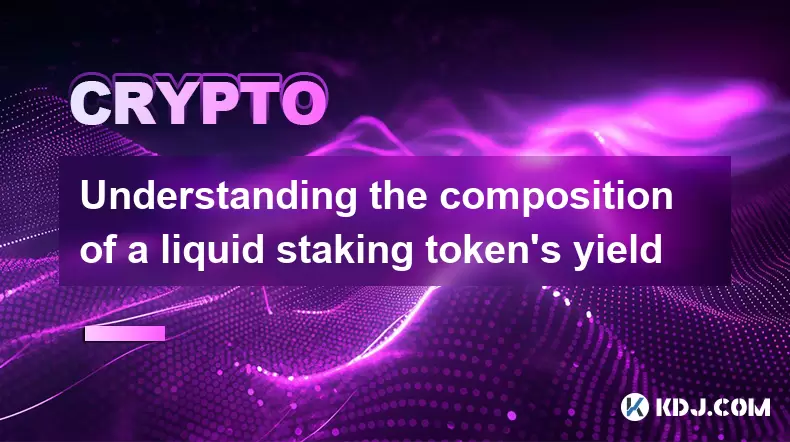
Understanding the composition of a liquid staking token's yield
Jul 20,2025 at 09:07am
What Is a Liquid Staking Token?A liquid staking token is a representative asset issued to users who stake their native cryptocurrency on a proof-of-st...

What to do during an LST depeg event
Jul 20,2025 at 04:57pm
Understanding LST Depeg EventsAn LST (Liquid Staking Token) depeg event occurs when the token, which is typically pegged to the value of the underlyin...
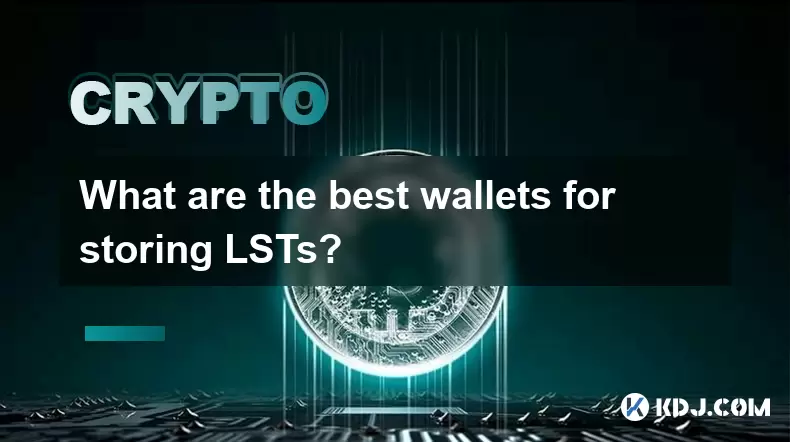
What are the best wallets for storing LSTs?
Jul 21,2025 at 03:14pm
Understanding LSTs and the Need for Secure StorageLSTs, or Liquid Staking Tokens, are derivative tokens representing staked assets on a blockchain. Wh...

Step-by-step guide to liquid staking on Solana
Jul 20,2025 at 06:42am
What is Liquid Staking on Solana?Liquid staking is a mechanism that allows users to stake their cryptocurrency while retaining liquidity through the i...
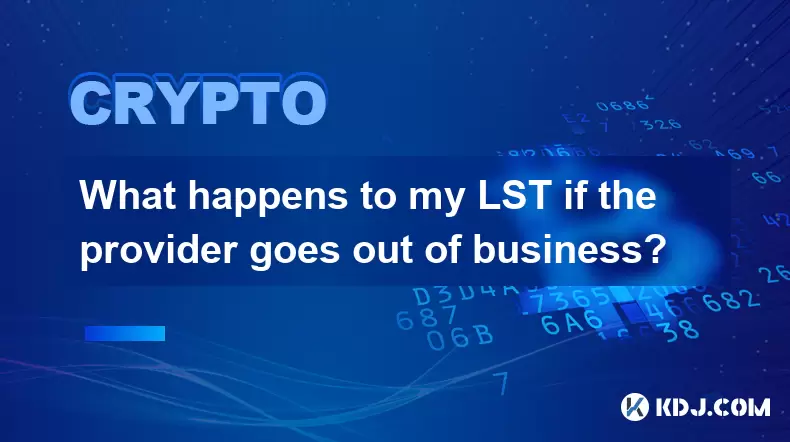
What happens to my LST if the provider goes out of business?
Jul 19,2025 at 10:21pm
Understanding LST and Its Dependence on ProvidersWhen you stake your Ethereum (ETH) through a Liquid Staking Token (LST) provider, you receive a token...
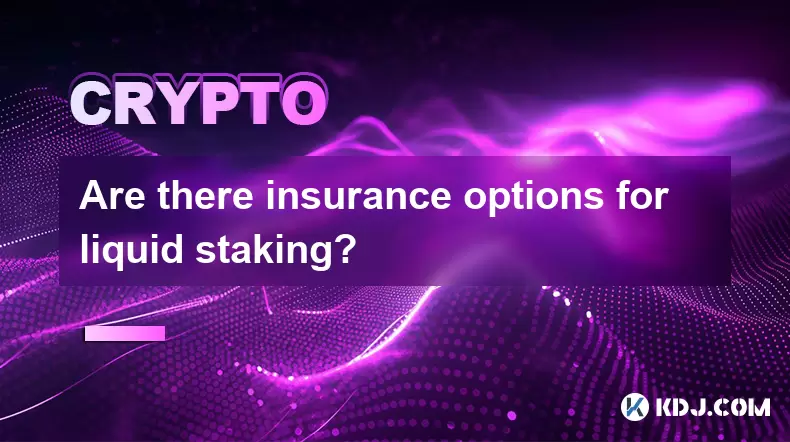
Are there insurance options for liquid staking?
Jul 19,2025 at 06:08pm
Understanding Liquid Staking and Its RisksLiquid staking is a process where users stake their cryptocurrency assets to participate in network validati...

Understanding the composition of a liquid staking token's yield
Jul 20,2025 at 09:07am
What Is a Liquid Staking Token?A liquid staking token is a representative asset issued to users who stake their native cryptocurrency on a proof-of-st...

What to do during an LST depeg event
Jul 20,2025 at 04:57pm
Understanding LST Depeg EventsAn LST (Liquid Staking Token) depeg event occurs when the token, which is typically pegged to the value of the underlyin...

What are the best wallets for storing LSTs?
Jul 21,2025 at 03:14pm
Understanding LSTs and the Need for Secure StorageLSTs, or Liquid Staking Tokens, are derivative tokens representing staked assets on a blockchain. Wh...

Step-by-step guide to liquid staking on Solana
Jul 20,2025 at 06:42am
What is Liquid Staking on Solana?Liquid staking is a mechanism that allows users to stake their cryptocurrency while retaining liquidity through the i...

What happens to my LST if the provider goes out of business?
Jul 19,2025 at 10:21pm
Understanding LST and Its Dependence on ProvidersWhen you stake your Ethereum (ETH) through a Liquid Staking Token (LST) provider, you receive a token...

Are there insurance options for liquid staking?
Jul 19,2025 at 06:08pm
Understanding Liquid Staking and Its RisksLiquid staking is a process where users stake their cryptocurrency assets to participate in network validati...
See all articles

























































































